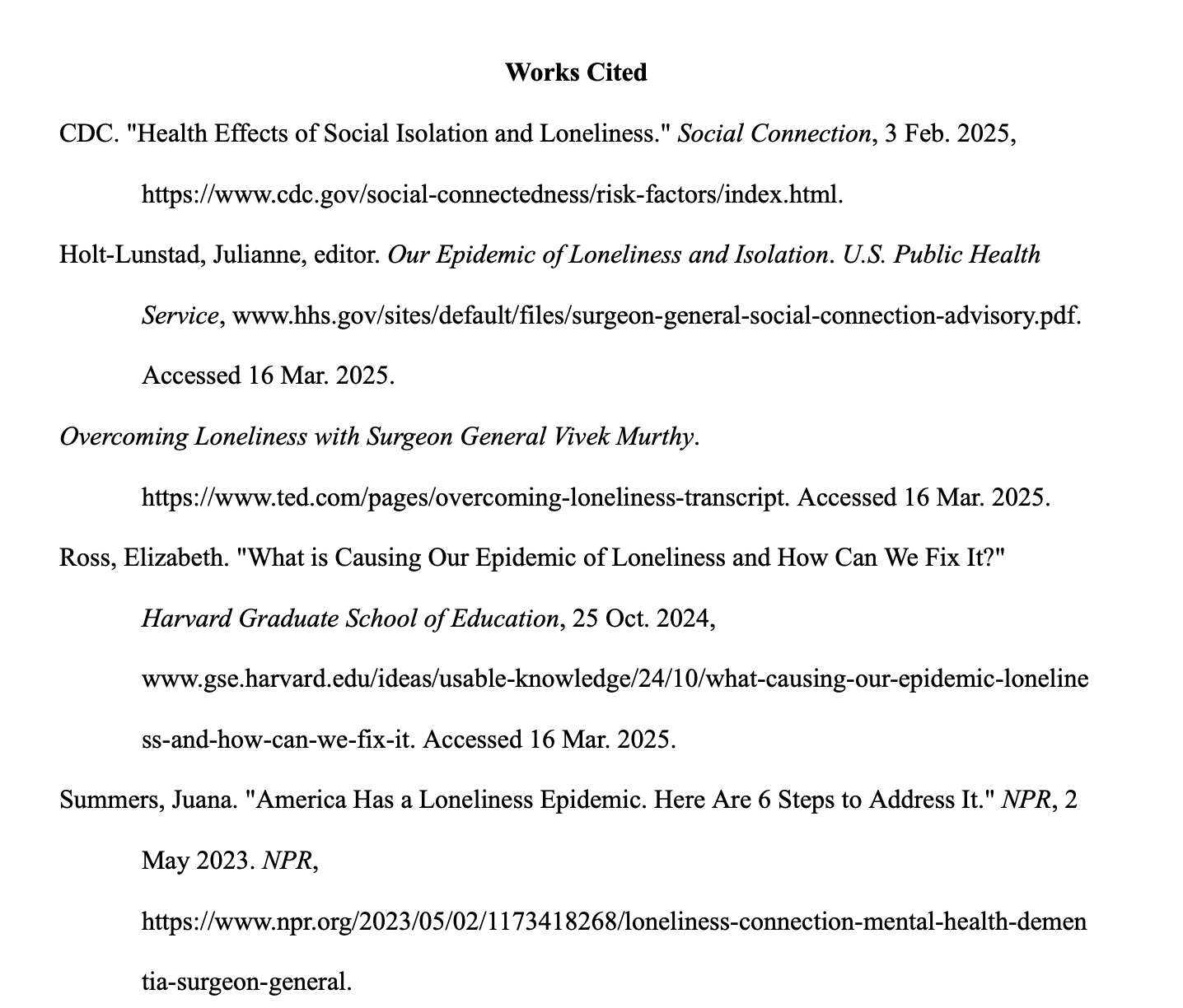The Dangers of (and Saviors to) Loneliness
I sent this article in for the Reconcieve Project magazine and blog!
The Dangers of (and Saviors to) Loneliness
By: Deepika Miryala - Clear Falls High School
792 Words
Abstract
Social connection is one of the most important things to human beings and our well-being. Being together makes us feel secure and visible. When we neglect this innate need, we suffer. With the digital age in full swing, we isolate more and more frequently without even realizing it, allowing the consequences to fester without us even realizing it. Modern life makes it easy to neglect relationships, because we’re so consumed by the constant demands and stimulation of the world around us. As the body of knowledge on this issue expands, we’ve learned of the widespread nature and physiological implications of it, as well as brainstormed ways to overcome these challenges. World leaders have taken an interest and advocacy has arisen, but more has to be understood and acted upon to truly counteract the destruction. However, by putting loneliness in the spotlight and working to bridge these divides, we can rebuild a more closely connected world than ever before.
Introduction
The Loneliness Epidemic has become a hot issue in the past few decades, with former US Surgeon General Vivek Murthy being the primary advocate against this disconnect. In a survey from Harvard Graduate School of Education, 21% of adults reported intense feelings of loneliness. While there isn’t much discrepancy between genders, the hardest hit age groups seem to be people aged 30-44 and 18-29. But what’s even more concerning than these stagnant numbers is the fact that loneliness has a growing rate of prevalence. Research from a 2023 US Public Health Service Report illustrates how between 2003 – 2020, average daily minutes of social isolation went from 285-333. There was a decrease in household engagement of 5 hours per month, and a sharp decline in social engagement with others by 10 hours per month.
Consequences of Loneliness
On both the physical and psychological level, we see the harms of our dwindling social connection. The statistic that keeps popping up these days is the fact that experiencing severe loneliness can have effects comparable to smoking 15 cigarettes every single day. And while information on the harms of smoking floods us every day and the amount of smokers in the US has been steadily decreasing, there is a severe deficit of information and awareness of the harms of loneliness. Aside from that, the Centers for Disease Control and Prevention increases your risk for heart disease, stroke, and type 2 diabetes. It’s difficult for many to imagine these consequences because loneliness doesn’t seem like a physical issue, but this emerging research just goes to show how ingrained our need for connection truly is.
And these effects extend psychologically in a variety of ways. Isolated individuals generally have higher risks of anxiety and depression, because we rely on social connection to lighten mental burdens and fulfill that hardwired need for human interaction. The problem is these gaps aren’t as easily identifiable as a lack of other basic needs. People need food to survive, so we eat. We need rest to survive, so we sleep. But what we sometimes forget is that we need interpersonal contact to survive as well. Isolation has even been correlated with a heightened chance for dementia, because our brains literally slow down without the stimulation of having other people with you.
Combating Loneliness Together
So, it’s time to reverse these trends. Solving loneliness inherently takes a community effort. Divisions at this level aren’t solved by the individual, but by the voices and actions of many, and solving public health problems requires public advocacy.
As a community, a 2023 article from NPR recommends building more infrastructure that supports human connection, such as parks and libraries. Additionally, we can read up on the issue and effectively advocate to health departments to integrate the loneliness epidemic into their goals.
And Dr. Vivek Murthy himself offers insights for what steps need to be taken. In his 2024 TED Interview with Adam Grant, he explains that relationships depend much more on quality than quantity. Having a large group of friends means nothing if you aren’t actually close with them, which has become a norm in the digital age with social media labeling hundreds of people as ‘friends.’ Murthy emphasizes that close friends, the kind you can rely on in a crisis and can be vulnerable with, are the true saviors of the loneliness epidemic.
Conclusion
If we’re able to give the Loneliness epidemic the attention it deserves, we can create a more connected culture. As science unveils the striking effects isolation has had on us in recent decades, communities need to respond by implementing policies targeted at social cohesion, and individuals need to prioritize the relationships in their lives. As put by Dr. Murthy, “While loneliness has the potential to kill, connection has even more potential to heal.”
